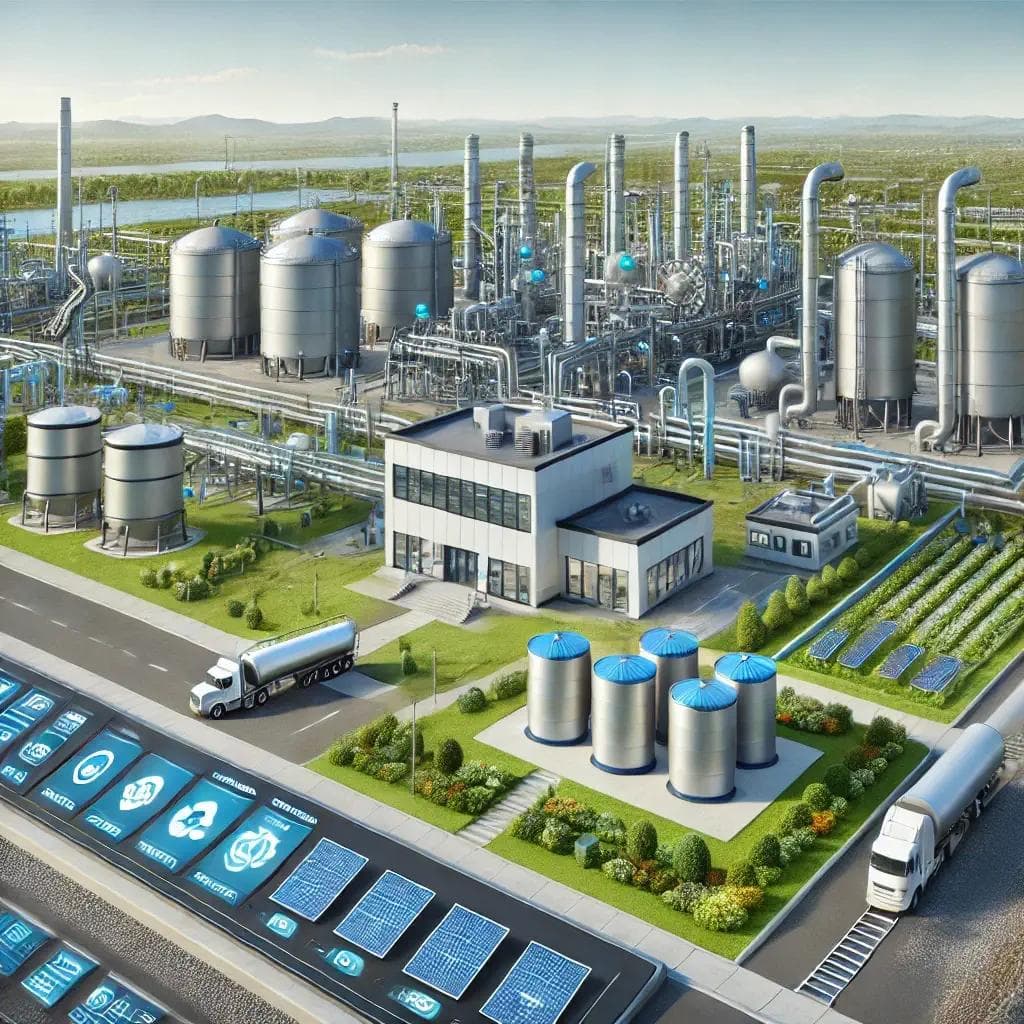The Future of Oil & Gas in East Africa: Sustainable Development Through Strategic Infrastructure
Exploring how strategic oil and gas infrastructure development is shaping East Africa's energy landscape, with insights into environmental stewardship, community impact, and regional economic growth.

Bol Thiang
CEO @Northern Hemisphere Group
The Evolution of East Africa's Energy Landscape
The discovery of significant oil reserves in East Africa over the past decade has transformed the region's economic prospects. South Sudan, in particular, sits at the heart of this transformation, with proven reserves of 3.5 billion barrels of oil. Yet the true challenge lies not in the discovery of these resources, but in developing them responsibly while ensuring they benefit local communities and support sustainable development.
Understanding the Regional Context
East Africa's oil and gas sector operates within a unique set of challenges and opportunities. The region's vast distances, varying geological conditions, and complex regulatory environments create a landscape where innovative solutions become not just beneficial, but essential. In South Sudan, where oil represents over 90% of export revenues, the stakes for getting development right are particularly high.
Recent years have witnessed a fundamental shift in how oil and gas infrastructure projects are conceived and executed. The focus has moved beyond mere extraction to encompass environmental protection, community development, and long-term sustainability. This evolution reflects both global trends and local imperatives.
Infrastructure Development: Beyond Basic Extraction
At Northern Hemisphere Group, our approach to oil and gas infrastructure development centers on creating integrated systems that serve multiple purposes. Modern processing facilities must do more than just handle hydrocarbons; they need to minimize environmental impact, maximize resource efficiency, and create value for local communities.
Innovation in Processing Technology
The future of oil processing in East Africa is being shaped by technological innovation. Our recently commissioned facility in Upper Nile State demonstrates this evolution. Using advanced separation technology and real-time monitoring systems, we've achieved a 40% reduction in processing water usage while increasing oil recovery rates by 15%.
This facility incorporates several groundbreaking features:
Water recycling systems that reduce freshwater consumption by 65% Zero-flare technology that captures and utilizes associated gas Advanced leak detection systems that protect groundwater resources Integrated waste management facilities that process multiple waste streams
But technology alone isn't enough. Success in this sector requires a deep understanding of local conditions and challenges. Our teams work closely with community leaders and local authorities to ensure that infrastructure development aligns with regional needs and capabilities.
Environmental Stewardship in Practice
The oil and gas industry's environmental responsibilities extend far beyond regulatory compliance. We've pioneered a comprehensive approach to environmental protection that begins at the planning stage and continues through the entire project lifecycle. This includes extensive baseline studies, continuous monitoring, and regular community consultations.
Water Resource Management
Water management represents one of the most critical challenges in oil and gas operations. In South Sudan's often water-stressed environments, responsible water use becomes particularly crucial. Our integrated water management system has revolutionized how we approach this challenge:
Through careful monitoring and innovative recycling systems, we've reduced freshwater consumption at our major facilities by over 60% since 2020. This achievement came through a combination of technological innovation and operational improvements, proving that environmental responsibility and operational efficiency can go hand in hand.
Community Impact and Development
The true measure of success in oil and gas infrastructure development lies in its impact on local communities. Our community development programs go beyond traditional corporate social responsibility to create lasting positive change. This includes:
Skills Development and Employment
We've established comprehensive training programs that prepare local residents for roles in the oil and gas sector. Since 2021, over 500 community members have completed technical training programs, with 70% finding employment in the industry.
Local Business Development
Supporting local businesses forms a crucial part of our strategy. Through our local content program, we've helped develop a network of suppliers and service providers who now form an integral part of our supply chain. This has created over 1,000 indirect jobs and stimulated local economic growth.
Technological Innovation and Digital Transformation
The digital revolution is reshaping oil and gas operations in East Africa. From artificial intelligence-powered predictive maintenance to drone-based pipeline monitoring, technology is enhancing both efficiency and safety. Our digital transformation initiatives have yielded impressive results:
- 30% reduction in unplanned downtime
- 45% improvement in maintenance efficiency
- 60% reduction in safety incidents
- 25% decrease in operating costs
Regional Economic Impact and Integration
The development of oil and gas infrastructure has catalyzed broader economic growth across East Africa. Pipeline networks, processing facilities, and support infrastructure create corridors of development that extend far beyond the energy sector. In South Sudan, we've witnessed how strategic infrastructure placement can transform entire regions.
Creating Economic Corridors
The Juba-Eldoret pipeline project exemplifies how energy infrastructure can drive regional integration. This project has created a development corridor that includes:
Modern highway systems connecting major urban centers Improved telecommunications infrastructure New business centers and industrial parks Enhanced cross-border trade facilities
The economic impact extends far beyond direct employment in the oil and gas sector. Small businesses along these corridors report average revenue increases of 40%, while new industrial facilities have created thousands of jobs in supporting industries.
Sustainable Practices and Future-Proofing
As the industry evolves, sustainability has become central to infrastructure development. Our approach focuses on creating facilities that can adapt to changing environmental requirements and energy transition demands.
Emissions Reduction and Monitoring
Modern oil and gas facilities must address the challenge of emissions reduction head-on. Our comprehensive emissions management program has achieved significant results through:
Advanced leak detection and repair programs that have reduced methane emissions by 65% since 2021. This success comes from combining cutting-edge technology with rigorous monitoring protocols. Thermal imaging cameras and sophisticated sensors provide real-time data, allowing for immediate response to potential leaks.
We've also implemented a groundbreaking carbon capture and storage pilot project at our largest processing facility. This initiative not only reduces emissions but also provides valuable data for future projects across the region.
Future Outlook: Adapting to Change
The future of oil and gas infrastructure in East Africa will be shaped by several key trends:
Energy Transition
As the world moves toward cleaner energy sources, oil and gas infrastructure must adapt. We're already incorporating renewable energy systems into our facilities, with solar power now providing up to 30% of our operational electricity needs at some sites. This hybrid approach improves reliability while reducing environmental impact.
Technology Integration
The next generation of oil and gas facilities will be increasingly automated and digitally integrated. We're investing in:
Smart infrastructure systems that optimize performance in real-time Advanced analytics for predictive maintenance Integrated supply chain management platforms Remote monitoring and operations capabilities
Conclusion
The development of oil and gas infrastructure in East Africa stands at a crucial juncture. Success requires balancing multiple priorities: economic development, environmental protection, community benefits, and technological advancement. Our experience shows that these goals are not mutually exclusive but mutually reinforcing.
Key lessons from our journey include:
The importance of early community engagement and continuous dialogue The value of investing in local capacity building The necessity of flexible, adaptable infrastructure designs The critical role of environmental protection in ensuring long-term success
As we look to the future, we remain committed to developing infrastructure that serves not just the energy sector, but the broader goals of sustainable development and regional prosperity. Through continued innovation, partnership, and commitment to excellence, we can ensure that East Africa's energy resources become a catalyst for positive change.
The path forward requires vision, commitment, and collaboration. At Northern Hemisphere Group, we're proud to play our part in this transformation, working with communities, governments, and partners to create infrastructure that serves both current needs and future aspirations.
